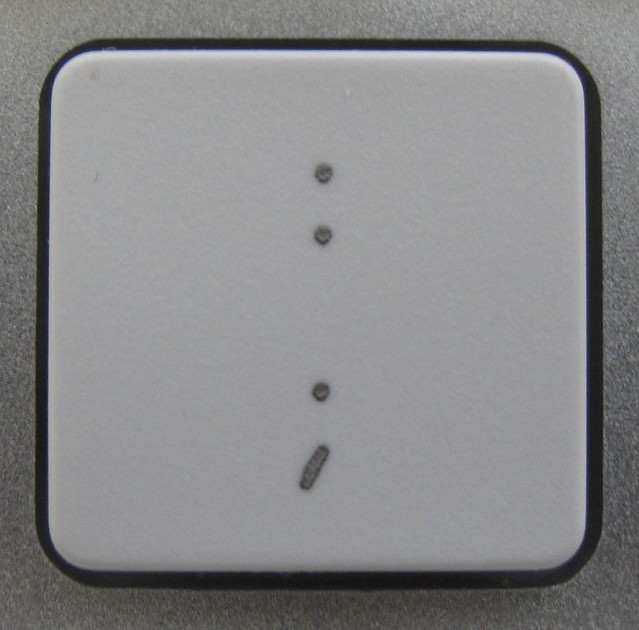Why is this key different from all other keys?
September 7, 2011 at 10:25 PM by Dr. Drang
I don’t want to get all Talmudic, but I have good reasons for using the semicolon as a “signal character” to start off all my TextExpander abbreviations. They’re given in my usual painful detail in this post, but I can summarize here:
- I want to use TextExpander’s immediate expansion option instead of having it wait for a delimiter.
- The semicolon is on the home row and is easy to type.
- English text never has a semicolon followed by a non-whitespace character.
- I don’t program in languages where I would be tempted to put semicolon-separated statements on the same line without whitespace after the semicolon.
Other members of the semicolon shul include John Gruber and Jason Snell. Brett Terpstra is part of another movement; he uses a double comma, which isn’t on the home row, but is certainly easy to type and would work even if you did like to squeeze semicolon-separated statements together.
I’m thinking of converting to a new system, though, especially now that TextExpander can sync snippets between my Macs and my iPhone. The semicolon is a poor signal character on the iPhone because it’s not on the main keyboard. My iPhone snippets—which are relatively few in number because the iPhone doesn’t allow script snippets—use a trailing z as the signal instead of a leading semicolon. Thus, my timestamp snippet on the iPhone has an abbreviation of tsz, while the same snippet on the Mac is ;ts.
A trailing z isn’t quite as unusual as a leading semicolon, but it’s rare enough that I could probably get by using it in both prose and programming
Having the same abbreviations on both platforms would simplify my life. I wouldn’t have to maintain two sets of snippets, and snippets created on one platform would be automatically added to the other. Maybe writing this post will get me to make the switch before Elijah comes.


